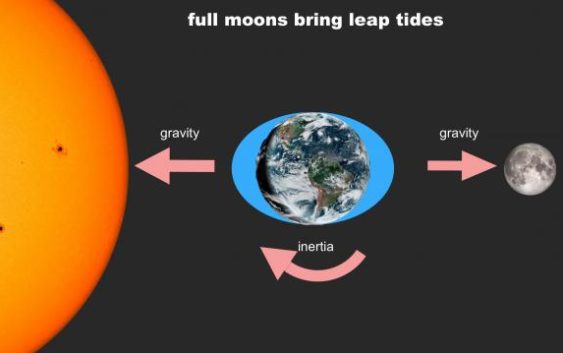- Western NC neighborhood still reeling from Hurricane Helene flood damage
- Ashe County Schools reopen after Hurricane Helene hit area over a month ago
- Ashe County Schools reopen Tuesday after Hurricane Helene hit area
- Carolina Hurricanes foundation donates $50,000 to rebuild Asheville hockey rink
- Stress, shelter, and safety: Hurricane Helene's effect on domestic violence victims in NC
Blue, super, hurricane moon adds to storm surge threat for NC

The Moon reaches full phase Wednesday at 9:35 p.m., less than 10 hours after reaching perigee, the closest point in its orbit around Earth. That earns this full moon the “super” title, by all popular definitions. This is also happening at a bad time, just about 12 hours after Hurricane Idalia made landfall along Florida’s Big Bend.
Storm surge is always a concern along coastal areas well beyond a hurricane’s track. Any full (or new) moon brings higher tides because the Sun-Earth-Moon lineup has the gravitational forces that produce the tides, at their greatest, about 20 percent higher than other times.
Perigee brings the Moon to its closest point to the Earth, increasing that gravitational pull even more, bringing high tides even higher.
For example, looking at the NOAA’s tide predictions for Wilmington, NC, the tide peaked at 4.5 feet as the moon turned full on Feb. 5 when it was near apogee or the furthest point from Earth.
The next high tide, just after 10 p.m. on Wednesday night, just 12 hours after perigee or the closest point from Earth, is predicted to peak at 5.3 feet.
Nine or ten inches may not sound like much but when combined with hurricane force winds, the increased storm surge has had devastating impacts along the Florida and Georgia coast. The Moon’s influence on high tides also lasts days beyond the full moon as well.
Idalia isn’t the first hurricane to coincide with a full or even super moon.
Hurricane Hazel, the only category 4 hurricane to hit the North Carolina coast, came ashore days after a super moon, inundating the coastline with storm surge as high as 18 feet in Calabash. Hazel nearly wiped out Garden City, SC, according to a National Weather Service overview of the storm.
More recently, Hurricane Sandy made landfall in New Jersey in 2012 on the the day of the full Moon and just two days before perigee, resulting in devastating inland flooding.
